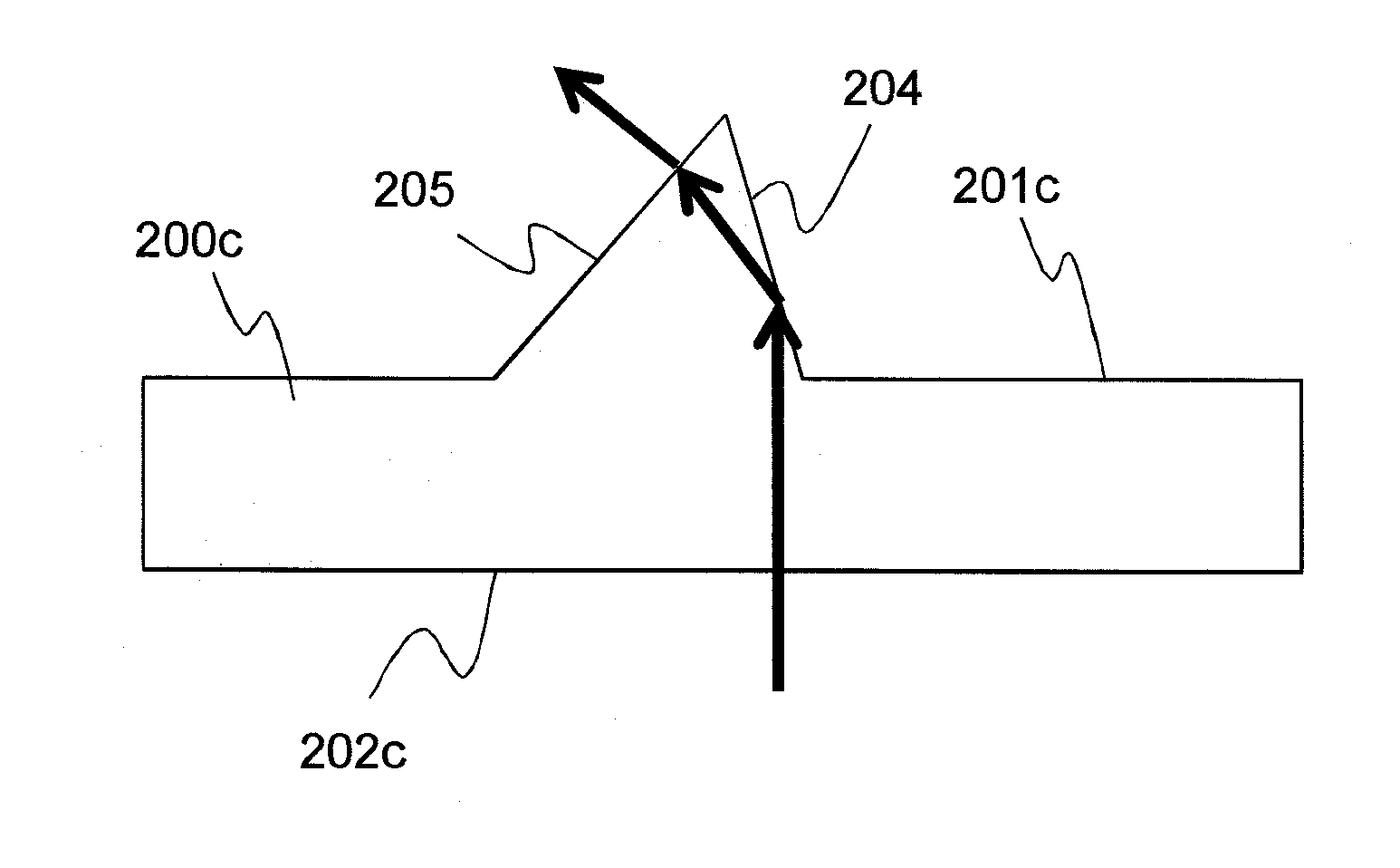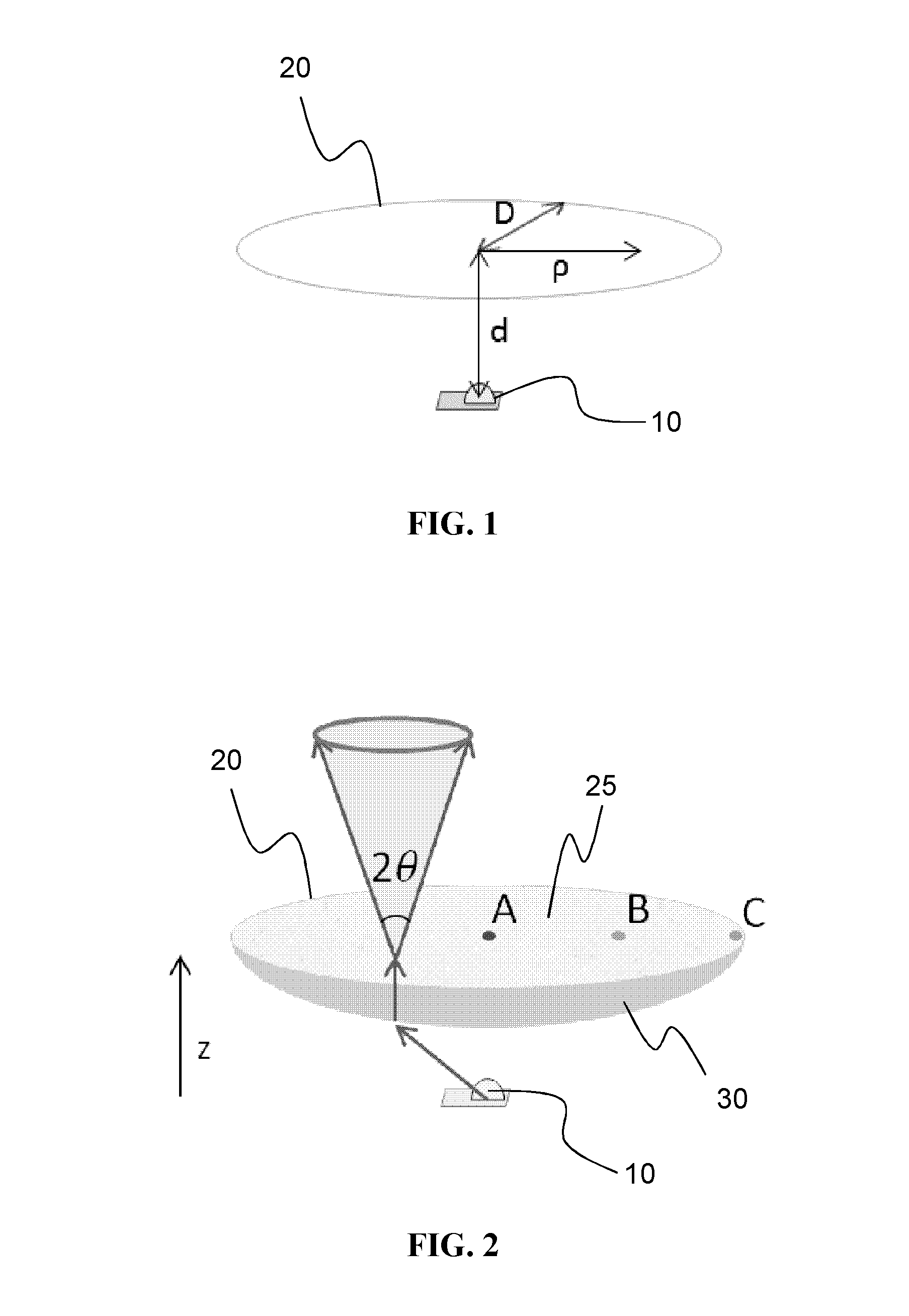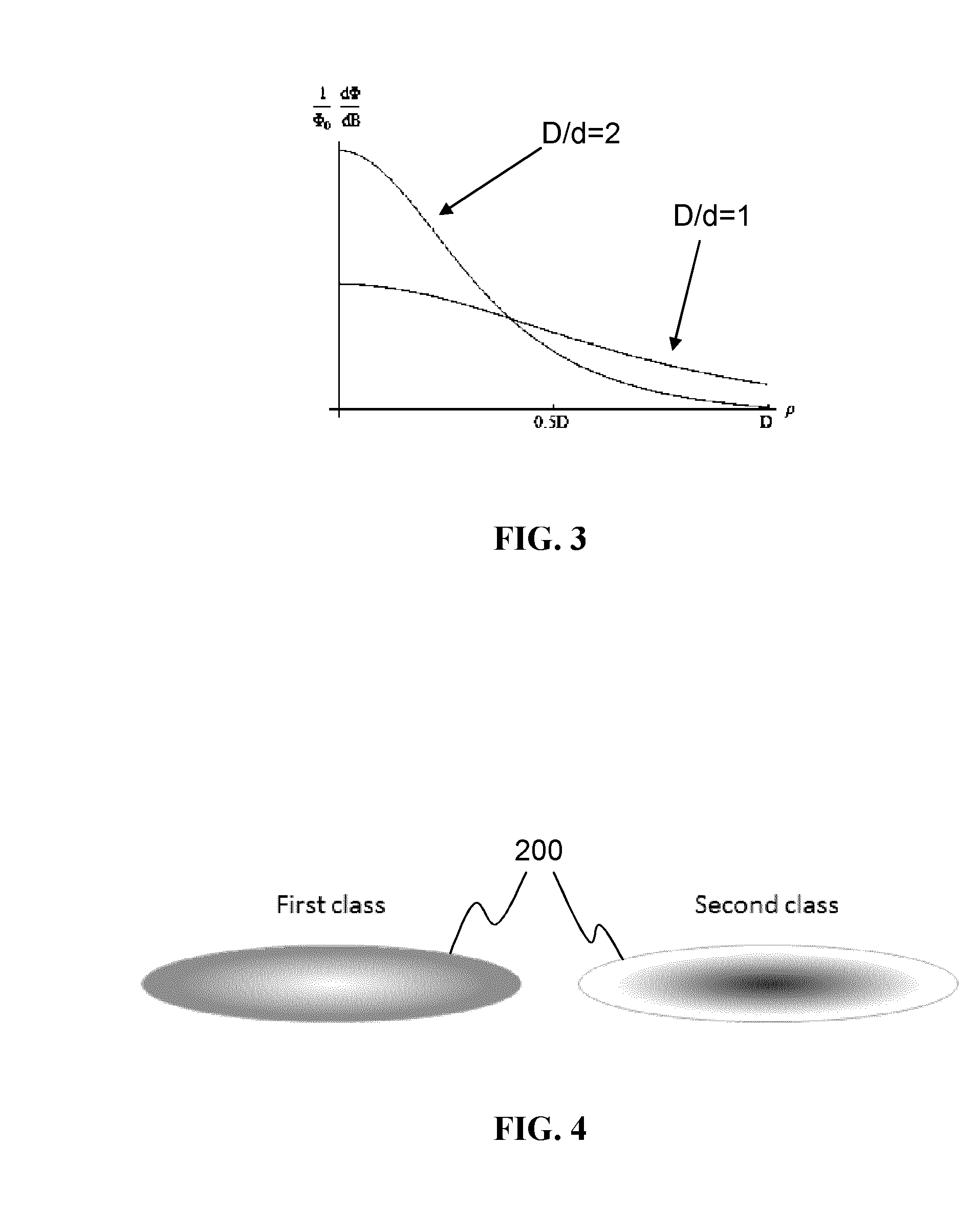Luminaire with a light diffuser
a technology of diffuser and luminaire, which is applied in the field of diffuser for luminaire, can solve the problems of affecting the appearance of exit windows, affecting the appearance of traditional luminaires, and becoming a significant challeng
- Summary
- Abstract
- Description
- Claims
- Application Information
AI Technical Summary
Benefits of technology
Problems solved by technology
Method used
Image
Examples
Embodiment Construction
[0104]Embodiments of the present invention use a customized optical structure that makes an initially non-uniform exit window appear uniform within a range of polar angles. Such a structure can be realized by faceted optical elements—for example, a microstructure made using laser ablation or 3D printing in the form of an optical plate. This can potentially provide a relatively low-cost solution.
[0105]As explained in the introduction, the main disadvantage of the present LED lighting systems is their spottiness. The spottiness stems from the geometrical form-factor of the LED light sources. The present invention makes the luminaire exit window appear uniform within a certain range of angles where it is most advantageous to reduce the spottiness. Embodiments of the invention can redirect (diffuse) the light directly—without sending it back to the luminaire. This can allow much higher optical efficiency to be achieved.
[0106]In embodiments of the present invention, a diffuser comprises ...
PUM
 Login to View More
Login to View More Abstract
Description
Claims
Application Information
 Login to View More
Login to View More - R&D
- Intellectual Property
- Life Sciences
- Materials
- Tech Scout
- Unparalleled Data Quality
- Higher Quality Content
- 60% Fewer Hallucinations
Browse by: Latest US Patents, China's latest patents, Technical Efficacy Thesaurus, Application Domain, Technology Topic, Popular Technical Reports.
© 2025 PatSnap. All rights reserved.Legal|Privacy policy|Modern Slavery Act Transparency Statement|Sitemap|About US| Contact US: help@patsnap.com



